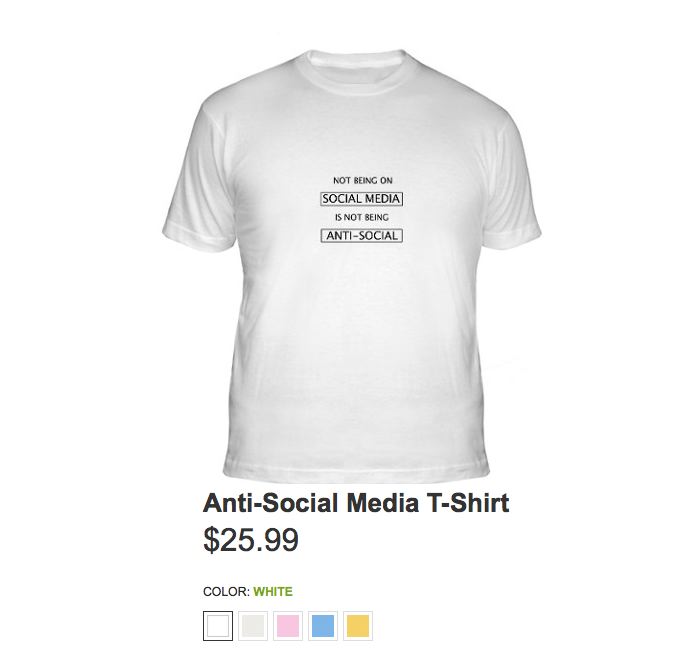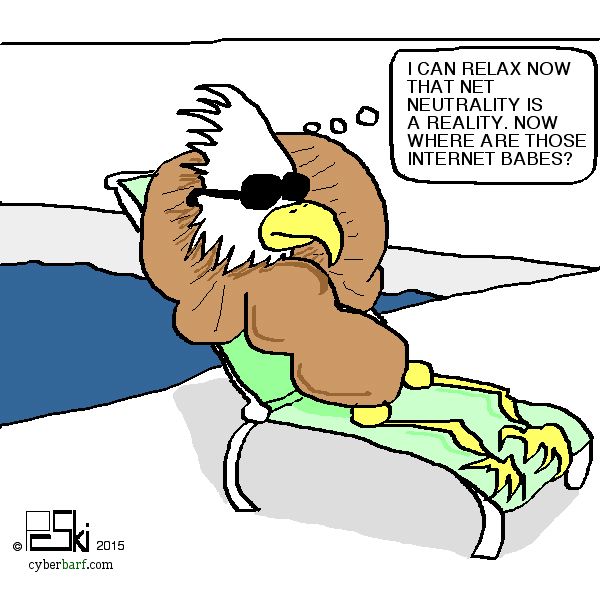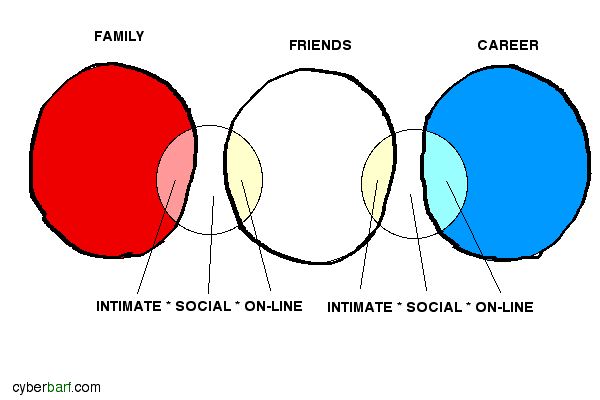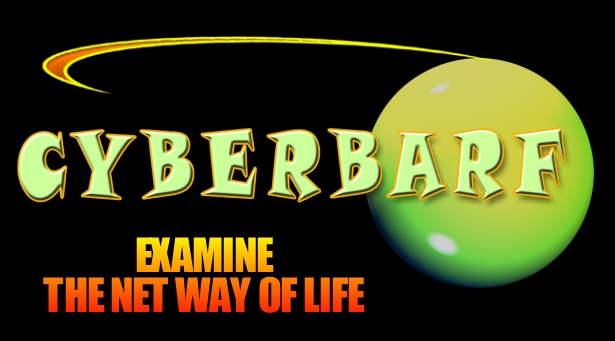|
LADIES' JAMS MULTIPLE STYLES-COLORS $31.99 PRICES TO SUBJECT TO CHANGE PLEASE REVIEW E-STORE SITE FOR CURRENT SALES Never tell people how to do things. Tell them what to do and they will surprise you with their ingenuity. George S. Patton
PRICES SUBJECT TO CHANGE; PLEASE CHECK STORE THANK YOU FOR YOUR SUPPORT! |
cyberbarf VOLUME 14 NO.12 EXAMINE THE NET WAY OF LIFE JULY, 2015 NOT LOST BUT FOUND iTOONS BEING FLAGGED SLAM OR FADE WHETHER REPORT GOSPLAT!
NEW REAL NEWS KOMIX! SHOW HACK!
©2015 Ski All Rights Reserved Worldwide Distributed by pindermedia.com, inc.
NOT LOST BUT FOUND ON THE INTERNET
Who knew? In the 1990s, McDonald's sold pizza. Yes, the fast food hamburger chain known for Big Macs, french fries and Happy Meals once tried to invade the very popular hometown pizza market by experimenting with pizzas to order. How this would work without a conventional oven is still a mystery since the assembly line success of the franchise is the flat top griddle. But early franchisees were allowed to enhance their menus (the most famous was the one who began serving breakfast items, now a corporate staple.) It was reported that less than a handful of current McDonald's restaurants will still make pizzas, but we are not sure where they are located in the U.S. |
|
cyberbarf.com EXAMINE THE NET WAY OF LIFE
iToons
cyberbarf BEING FLAGGED DIGITAL DEBATE On February 4, 1861, a month before Abraham Lincoln would be inaugurated in Washington, six Southern states (South Carolina, Georgia, Alabama, Florida, Mississippi, Louisiana) sent representatives to Montgomery, Alabama to set up a new independent government. Delegates from Texas soon joined them. With Jefferson Davis of Mississippi at its head, the Confederate States of America was created set up its own bureaus and offices, issued its own money, raised its own taxes, and flew its own flag. Not until May 1861, after hostilities had broken out and Virginia had seceded, did the new Confederate government transfer its capital to Richmond. Faced with a fait accompli, when inaugurated Lincoln was prepared to conciliate the South in every way but one: he would not recognize that the Union could be divided into two separate countries. For more than a month, there has been a heated debate in public and in social media about the Confederate Flag. The State of South Carolina still flies the Stars and Bars at its Capitol building. This has raised a national ire against South Carolina. Protesters believe that this flag is a racist symbol that should not be banned from public display. However, it is not that simple. For one, whatever the people and elected officials do in South Carolina with their public buildings is up to the people and elected officials in South Carolina to decide. The idea that one group can force their beliefs on another group or state is offensive to the core philosophy of our Constitution. But the slow creep of political correctness and special interest activism has brought a new form of old censorship methods. Flags are symbols. Symbols are Speech. Free Speech is Protected Speech, even if it is offensive to some people. That comment was posted to remind friends that the real issue in the flag controversy was not the flag itself, but the core of free speech. But the biggest reaction was to have this anti-flag movement erase the flag and its history from our collective knowledge and textbooks. One should never erase history; one should learn from it. As the Encyclopedia Britannica points out,the Union and Confederate governments has a similar position on slavery, the root cause of the war. The Confederate constitution, which was in most other ways similar to that of the United States, expressly guaranteed the institution of slavery. Despite pressure from abolitionists, Lincoln's administration was not disposed to disturb slavery as an institution, if only because any move toward emancipation would upset the loyalty of Delaware, Maryland, Kentucky, and Missouri, the four slave states that remained in the Union. Later on, under the pressure of war, both governments moved to end slavery. Lincoln came to see that emancipation of the blacks would favorably influence European opinion toward the Northern cause, which then would deprive the Confederates of foreign support, their productive labor force on the farms, and would add much-needed recruits to the Federal armies. In September 1862 Lincoln issued his preliminary proclamation of emancipation, promising to free all slaves in rebel territory by January 1, 1863, unless those states returned to the Union; and when the Confederates remained obdurate, he followed it with his promised final proclamation. A natural accompaniment of emancipation was the Union use of black troops. By the end of the war the number of blacks who served in the Federal armies totaled 178,895. Uncertain of the constitutionality of his Emancipation Proclamation, Lincoln urged Congress to abolish slavery by constitutional amendment; but this was not done until January 31, 1865, and the actual ratification did not take place until after the war. Meanwhile the Confederacy, though much more slowly, was also inevitably drifting in the direction of emancipation. The South's desperate need for troops caused many military men, including Robert E. Lee, to demand the recruitment of blacks; finally, in March 1865 the Confederate congress authorized the raising of black regiments. In yet another way Davis' government showed its awareness of slavery's inevitable end when, in a belated diplomatic mission to seek assistance from Europe, the Confederacy in March 1865 promised to emancipate the slaves in return for diplomatic recognition. Nothing came of the proposal, but it is further evidence that by the end of the war both North and South realized that slavery was at its end. There cannot be one meaning for the flag as a symbol. As Reason magazine pointed out that that the Confederate flag emblem was adopted by the Southern Student Organizing Committee, a New Left multiracial group founded in 1964. At a time when the activists most likely to be waving a Confederate banner were affiliated with the Ku Klux Klan, SSOC decided to adopt and adapt the battle flag for the other side of the civil rights struggle. They symbol they wanted to use was a black and white handshake imposed over the Confederate flag to express equality in civil rights. However, several black activists stressed that no matter how SSOC altered the flag's image, African Americans forever would see it as a symbol of racial oppression. After the Civil War, the battle flag laid dormant for a long time. It made a comeback in the middle of the 20th century, the number one reason for its return was its popularity among the partisans of Jim Crow laws. It also made a comeback because of the the centennial of the Civil War. Even today, you can make lists of additional definitions to the meaning of the Confederate flag. One is State's Rights. The US Constitution specifically provided that any unremunerated rights, powers and liberties were reserved to the States and the People. In the United States the term states' rights has also been widely used for a variety of political programs. Before the Civil War it was the rallying cry of Southern opponents of Northern-inspired tariffs and Northern proposals to abolish or restrict slavery. The doctrine of a state's right to annul an act of the federal government within its boundaries became known as nullification. By virtue of a state's sovereignty, the Southern states argued that a state also had the right to secede. This constitutional question was only resolved by the North's victory in the American Civil War. In the second half of the 20th century, states' rights became a catchword of some who opposed federal government intrusion on state and local matters. No greater emphasis on state's rights and the nullification of the will of state voters have been the recent Supreme Court decisions on nationalization of health care insurance and state definitions of marriage. More Americans have realized that State power declined rapidly after 1900 in the United States because of the increased activity of the central government through the power of Congress to control interstate commerce, federal financial subsidies to the state governments or their subdivisions, national measures for combating economic depression, and participation in World Wars I and II. The anti-flag proponents want to impose their viewpoint of the Confederate flag on everyone. This is wrong. It ignores all the other meanings that different people can attach to a symbol, especially one as charged as the battle flag. Southerners may believe the flag is a part of their heritage, when their forefathers stood up and died for their principles. They may feel that they need to remember the sacrifice of more than half of a generation of men on the battlefield just as nationally, we honor our Veterans of foreign wars with memorials. Southerners may also see the flag as the symbol of how much society has changed for the better since 1865. Some people may see the flag as a symbol against government restrictions on their economic freedoms through restrictive laws and burdensome regulations. Some people may only recognize the flag as a symbol of freedom of some good old boys on the Dukes of Hazzard TV series. But no where in the coverage of this controversy did we see anyone advocating using the flag to reinstate slavery or revoke the 13th, 14th or 15th Amendments to the Constitution. Our country was founded on a forum of ideas and not one government decree on how we are supposed to think. The real danger in this debate is that non-discriminatory messages are being trampled in the path of zealous advocates for a single cause. It can create negative connotations in society. For example, Apple confirmed that it has pulled several Civil War games that featured images of the Confederate flag from its iTunes App Store. Apple claimed that the ban does not apply to educational apps, but battle simulation games are based upon historic facts and figures. “We have removed apps from the App Store that use the Confederate flag in offensive or mean-spirited ways, which is in violation of our guidelines,” an Apple spokesperson told BuzzFeed News. Among the games removed so far: Civil War: Gettysburg, Civil War: 1862, Civil War: 1863, Civil War: 1864, and Ultimate General: Gettysburg. News of the sudden disappearance of games displaying the Confederate flag was first reported by TouchArcade. Sources close to Apple say the company is working actively with game developers affected by the Confederate flag ban to get their apps back into the App Store as quickly as possible but in order to do that, developers will need to remove the Confederate flag from their games or replace it with something else. This is a horrible example of political correct speech negatively impacting on history by trying to erase it. By removing a Confederate flag from a historical record (and replacing it with anything, as absurd as a bunny flag) is creating a false representation of history, which is far worse than dealing with the various meanings and context of an actual historical fact. In going back to the personal library shelf, there sits a 1991 game called No Greater Glory: The American Civil War. It is a strategic simulation game that allows the player to be Lincoln or Davis. In order to learn history, a game can develop new insights from the historical text. This game was designed in part by a Ph.D and it contained a history pamphlet on the Civil War. I recall using this game to answer the unanswered question: could the South have won the Civil War? Based upon numerous trial and error simulations, the answer was a surprising yes. The only way the South could have won was to have General Lee's entire Southern armed forces attack a meek and timid General McClellin's armies camped around the District of Columbia during the early months of the War. Why would anyone, including Apple, want to impede curious people from exploring their own Civil War questions? Again, this flag controversy is framed in the wrong context. One needs to respect the opinions and beliefs of other citizens. Otherwise, we no longer live in a democracy of ideas but a tyranny controlled by thought police.
|
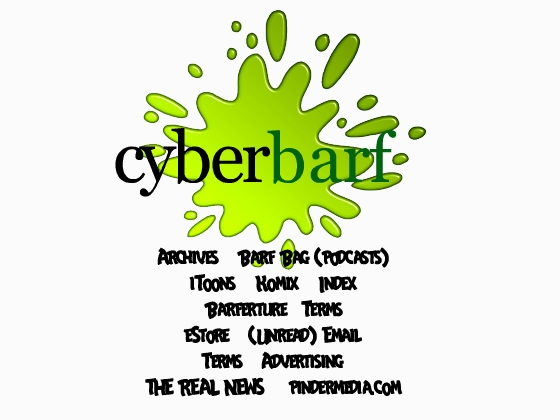 |
Let's all celebrate the freedoms of the internet age with the dignity of rational, reasonable and respectful conversation. |
|
cyberbarf EXAMINE THE NET WAY OF LIFE
cyberbarf SLAM OR FADE ESSAY This is a follow-up on previous articles on Relationships. We know that interpersonal relationships can be meaningful, supportive, fun, exciting, confusing, frustrating, emotional, irrational to hurtful. The advent of social media has added another layer of complication to normal social relationships. There are new dynamics and new cultural aspects of modern socialization. There are three basic relationship ties: social, professional and social media. There is a constant overlap in how relationships are conducted over these various norms. Three basic ways of communicating are in person contact, voice communication and textual posts. Social media has subdivided the question even further. There are three main groups in everyone's life: family, friends and colleagues at work or career. How close people are to other people in each group sets the tone for many of their other relationships.
It is much easier to have a person move from left to right than from right to left. It has to do with how our subconscious mind constantly lies to us as a defense mechanism so our emotional core, feelings, are not hurt. In the above chart, intimate means extremely close and familiar such as sibling best friend or spouse. Intimate relationships involve daily contact of affection and support between two people. There are some situations were a distant family member is a bridge relationship between family and friends categories. Those friendships can be classified as best, close, "social" or "on-line." On-line is a relative new means of growing one's own community base - - - but purely in social media circles and not in an in-person social setting. More Millennials are finding that on-line only relationships fit their socialization needs. In the career category, on-line only relationships could include business contacts or followers if you are professional writer, author, journalist or actor. Those on-line connections are far removed from any actual physical contact with limited interplay through posts or tweets. The social aspect of a career relationship may be co-workers who are not quite non-business social friends, but are part of one's work place (cubical buddies). The intimate business friend is one who is more than a mere co-worker or associate, but a business partner or someone you have brought into your private life to share events outside of work. One can look at one's own life to determine whether family members are the stable core of one's own social scene, or whether the circle of friends from both work and outside work makes up the biggest component to their lives. There is no rule that in any social bridge a person who is an on-line friend cannot become a social friend or even an intimate friend. There are usually three ways a friendship can end: a hard slam (I don't want to see you again); neglect (where people drift a part as time goes by); or the fade (where one person still tries to keep contact with the other but with limited or no feed back). What is now interesting researchers is the reverse course where intimate friends slowly have their status fade away to nothing, not even an on-line presence. Now there is nothing wrong about people changing their opinions or perceptions about their friends. Friends can be bombastic, annoying, opinionated, mean spirited, crazy or plain dumb in words or actions. Some people constantly prune their friendship tree branches to concentrate more time, resources and effort on more social or intimate relationships. It is how this change in status intrigues sociologists in the social media age as it relates to romantic relationships and dating protocols. With old dating rules from your parents in conflict with modern independent women's perceptions of self worth and goal oriented results, there really is no solid definition of what a date is anymore. When two people get together they could be merely social friends, potential dating partners or in an early boyfriend-girlfriend relationship. The gray area of confusion is from the lack of communication of intent between the parties. It could also be that one person thinks it is a date while the other thinks it is a friendly meeting with no expectations. Such fog would never have been allowed in Victorian era courtships. So even if the parties agree that they want to know each other better and see where the attraction leads to, digital media adds another gray area. On-line dating has allowed people to actually date on-line without interpersonal contact. It sounds strange but some people actually prefer Skyping a date than actually going out to a movie, restaurant or bar with a date. It may stem from the fact that the younger generations are so integrated into their technology that this on-line only dating seems a natural extension of their digital life. Now, for some people, especially women, there is a greater sense of safety and security in on-line relationships. One can kick the tires on a potential date with an on-line chat more efficiently and directly than trying to act one through an awkward, formal date. So what happens when two people hit if off and like each other's company? They progress their relationship and move it toward intimacy. It means more social interaction and in-person contact. It is a basic risk and reward situation. Here is an example from a Yahoo Health article. You have met someone. You see this person with great potential. You may have only been on a few dates, but they have all been practically perfect. Things are looking good. But then, suddenly, something shifts, out of nowhere . . . almost imperceptibly at first. An ignored text. An unreturned email. Excuses of “I have just been so busy at work.” A canceled date . . . and then another. “Sorry, I am going out of town.” No effort to reschedule. Internally, you are panicking, because you have been here before. This is a slow fade, you realize, and soon you know this person with the amazing potential will be completely gone from your life and there’s nothing you can do to stop it. “You will never get closure in these types of situations, which is what almost everyone wants,” Boston-based dating coach Neely Steinberg tells Yahoo Health. “It's always, Why did you just disappear? I need to know!” It is one of the most frustrating aspects of modern dating culture: disappearing is easy, and it happens often. Fading out is the new quasi-breakup. Before, if some one wanted a break in a dating relationship, they told you clearly that their feelings or situation has changed and it was time to move on. Harsh and painful, perhaps, but it served an important social purpose: closure. Now, there may be real reasons that confuse a slow break-up from just a busy person. Everyone with a career is nervous about their job. Everyone with a job is busy. It is a legitimate reason not to schedule a date because one is busy with a deadline project or two. But one tell tale sign for some social researchers is that if another person wants to be with you, they still need to make some effort to be with you. Even in any early relationship, and even in a long running friendship, people make time for each other because they enjoy each other's company. We need a social life; it is part of our DNA. In the example, a slow fade may happen because one person in the early dating relationship realizes that things are starting to get real serious. Serious relationships mean more time, effort, and commitment. Some people want to slow down the relationship so they use non-responses to social media requests, texts, messages and voice mails as a sign to cool the situation. But this is the point where honest communication can save a good thing from becoming a train wreck. Another reason a slow fade can happen quickly is that a person, knowing that a serious relationship could happen, decides to have a personal heart to heart to determine whether he or she is “really into you.” Often, the slow-fader feels like he or she is drowning. They were comfortably dating and then, at a certain point, it is obvious the other person starts having expectations about the person and the relationship. And the other person has two choices: “OK, I'm in, let's do this, let's have a relationship! ”or, “I am not ready for a commitment, or, I'm not sure about this person, or, I just don't know what I want. ” “In these situations, when one partner needs more than the other individual is willing or able to give, they find it easier to simply begin backing away,” psychologist and counselor Karla Ivanovich told Yahoo Health. Rather than communicate fears and concerns, not an easy conversation to have, the slow-fader gradually slips away, so that the other person will get the hint without having to have an open discussion. This is why a slow-fader will often still show signs of interest as they are fading out, making the ultimate drop kick moment that much more confusing. “They are conflicted themselves,” researchers say. “They want to know that you are still there, that you are still an option, that the door has not fully closed, just in case they have an epiphany about you.” It is a dangerous gambit to hedge your bets on your heart when your heart is not into it. The end can be brutally quick and silent. A person can “unfriend” and/or block a romantic partner without telling them. For some, it is like stepping on an emotional land mine when they figure out that this social media termination means our relationship is over and I don't want anything further to do with you. Unless the other person knows of an unresolved argument, an inconsiderate gesture or an embarrassing public display that hurt the defriender, that person had no idea it was coming and its impact is a hard shock and confusion. This is especially true with women who do not want to hurt a man's feelings about her change in direction. How women think it is nicer to not hurt a man's feelings by freezing him out or setting an emotional land mine is one of those mysteries men will never figure out. In the past, breaking up met an awkward in-person meeting where one partner told the other their relationship was over. The reason may not have made sense, but at least their was a reason. There was closure. But in the digital world, an “unfriend,” a block , a slam or fade does not give closure. It merely prolongs the pain of a person trying to rack their brains to figure out why a person suddenly wants nothing further to do with him or her. And this is not a rare occurrence. . According to Ivanovich, Millennials are practically groomed to pull a slow fade. “There are two concepts . . . . ” she says. “In the ADD Nation, children are taught to jump from sport, to activity, to interest, to academics, and to do so with intense frequency. If you are not excelling at something, get rid of it.” And while no one is perfect, they are primed to think that we can always get closer, do better, or find a better fit without putting in any additional work. We think we can simply trade up. This is the idea behind the concept of the Disposable Society, Ivanovich says. “We are more inclined to toss the item, or relationship, than to actually put the time in to address the problem and fix it, especially with relationships,“ Ivanovich says. “As you can imagine, commitment is not as important in this concept.” Social media perpetuates the myth that everyone is happy and living life to the fullest, Ivanovich says. “And remember your grandmother's old saying: You only want something when someone else has it. We are a society of coveters, so imagine your surprise when someone else has gladly engaged in a relationship with what you previously tossed away.” Because of the easy swipe and toss away nature of social media technology applications, there will be a rebound of angst, introspection or forgiveness. Sociologists wonder whether people should give a slow-fader a second chance. Some one who has hurt you says they have made a big mistake and wants to see you again. “Sure, a person can be worth a second try in some cases, but proceed with caution,” advise dating coaches. “There needs to be open and honest communication about what happened [and] how you were hurt, and boundaries need to be set, communicated, and held to. A sincere apology is nice, but their actions need to prove their words true,” coaches say. But the irony is not lost that a slow fader's fear of open and honest communication caused the slow fade drop kick that ended the first relationship. No one wants to get hurt. No one wants to put their feelings on the line to trampled by someone you care about. New technology and cybercultural norms are making those things easier to accomplish without a face to face, open and honest communication. The new way can sting, hurt and puzzle more than the old ways. |
|
cyberbarf THE WHETHER REPORT |
cyberbarf STATUS |
| Question: Whether blocking friends on social media is rude? |
* Educated Guess * Possible * Probable * Beyond a Reasonable Doubt * Doubtful * Vapor Dream |
| Question: Whether nostalgic backward compatibility of older games will be on the rise in the next generation of consoles? |
* Educated Guess * Possible * Probable * Beyond a Reasonable Doubt * Doubtful * Vapor Dream |
| Question: Whether more revelations about NSA spying on US allies will stop the practice? |
* Educated Guess * Possible * Probable * Beyond a Reasonable Doubt * Doubtful * Vapor Dream |
|
cyberbarf EXAMINE THE NET WAY OF LIFE cyberbarf GOSPLAT! MOTION CAPTURED LA Observed blog recently referenced a YouTube video of a GoPro camera footage of an accident. A motorcycle rider named Jesse Lopez was cruising with friends on Glendora Ridge Road in the Angeles National Forest. He was wearing a GoPro camera on his helmet. His group started along the twisted two lane highway. At times he reached 55 miles per hour.
Then out of nowhere, when he collides head-on with a fire truck.
The camera captures the rider tumbling to the ground. Lopez survived with injuries that include a broken femur, tibia, fibula, ulna and humerus. He said he was lucky, he will be able to walk again.
|
|
THE PINDERMEDIA STORE IS FULL OF FUN T-SHIRTS CLOTHES, HATS AND OTHER ITEMS. CHECK OUT THE STORE FOR ITEMS
SUPPORT cyberbarf VISIT THE CYBERBARF STORE! Prices and styles may vary depending on sales, allotments, inventory. |
|
BACK IN BLACK WITH THIS CLASSIC CYBERBARF T-SHIRT!
FEATURING: THE REAL NEWS IMPACT EDITORIAL CARTOONS WRIGLEYVILLE WAR POLITICS ENDORPHIN RUSH THE DARK ABYSS RANDOM ELECTRONS SPECIALS
FEATURING: THE REAL NEWS ARCHIVES CARTOONS MADAME'S TEA HOUSE THE BAR EXPLORE THE CITY SCAPE UNDER CONSTRUCTION SURPRISES ESTORE SPECIALS |
NEW THEORIES AND CHARACTER ESSAYS INCLUDING 10 YEAR ANNIVERSARY ARTICLES
cyberbarf
THE STEAM PUNK SPECIAL EDITION featured new Music from Chicago Ski & the (audio) Real News: (mp3/4:14 length)
EXAMINING THE NET WAY OF LIFE cyberbarf™ distributed by pindermedia.com, inc.
|
cyberbarf
Distribution ©2001-2015 pindermedia.com, inc.
All Ski graphics, designs, cartoons and images copyrighted.
All Rights Reserved Worldwide.


